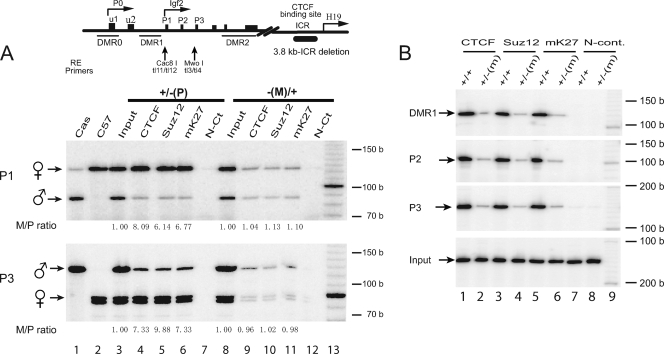FIG. 4.
ChIP of CTCF, Suz12, and methylated H3-K27 in transgenic mouse skin tissues. (A) ICR deletion model. Mouse fibroblasts, kindly provided by M. S. Bartolomei, were cultured from neonates carrying a 3.8-kb deletion of the ICR (35). These mice were generated by reciprocal crosses of C57BL/6(CAST) with F1 ICR heterozygotes maintained in a C57BL/6 background. Heterozygous fetuses inherit either a maternal [−(M)/+] or a paternal [+/−(P)] ICR deletion. Allelic ChIP products were distinguished by polymorphic restriction enzymes Cac81 and Mwo1. N-Ct, negative control (no antibody). b, bases. (B) ICR mutation model. Fetal liver tissues, kindly provided by P. E. Szabo, were derived by breeding male FVB/NJ.CAST/Ei(N7) and female 129SI/ImJ mice to produce F1 mice that are heterozygous for a mutation in the ICR (34). Wild-type (+/+) mice carry both alleles from strain CAST/Ei. −(M)/+ mice carry the maternally inherited mutated ICR from strain 129SI/ImJ (129) and the paternally inherited ICR from strain CAST/Ei. Since the wild-type mice are homozygous, the parental alleles cannot be distinguished. N-cont., negative control (no antibody). b, bases.

